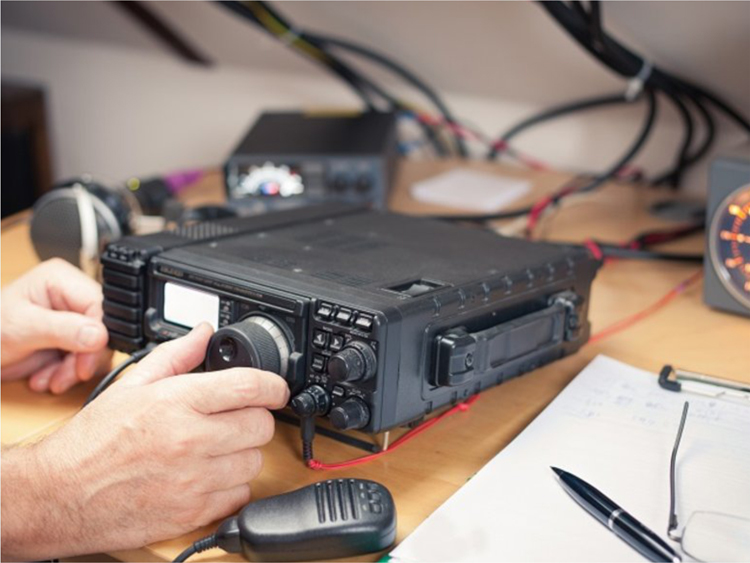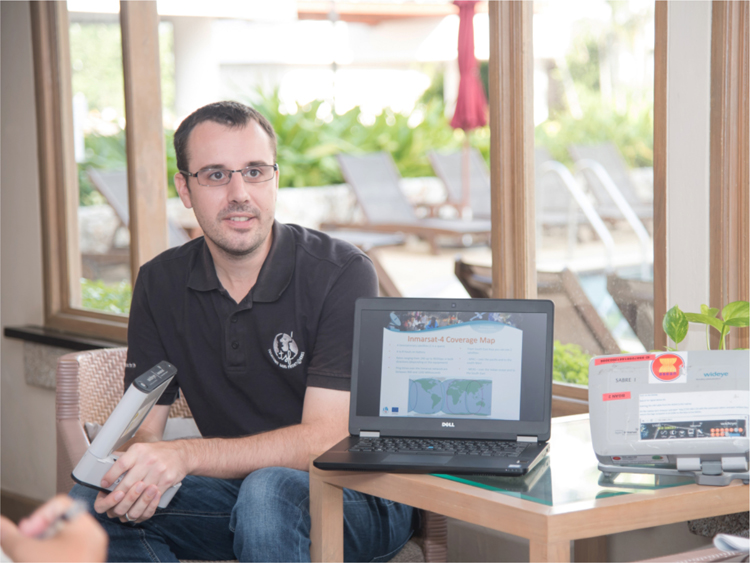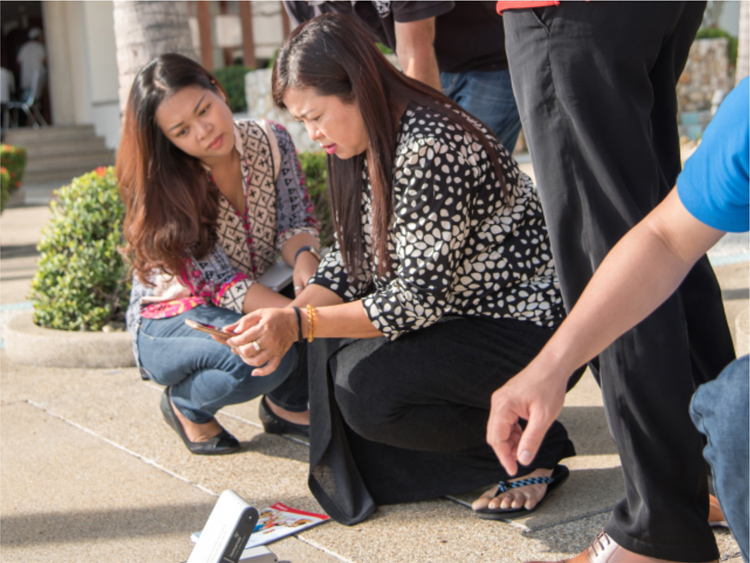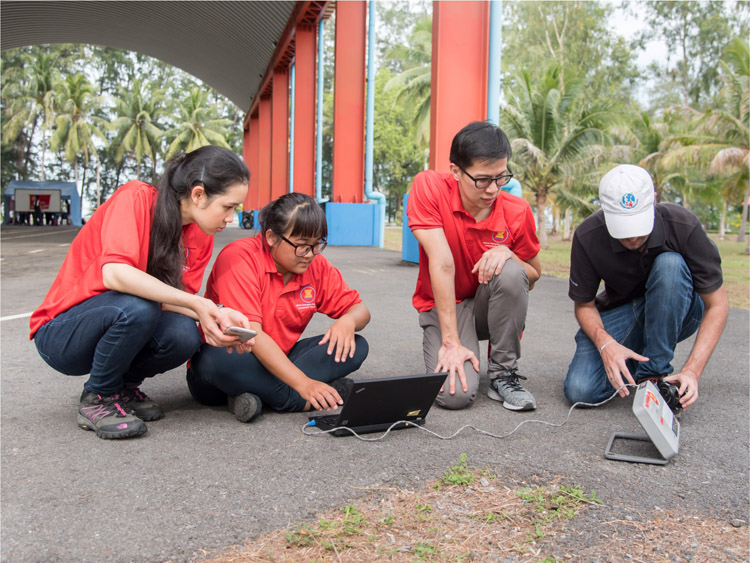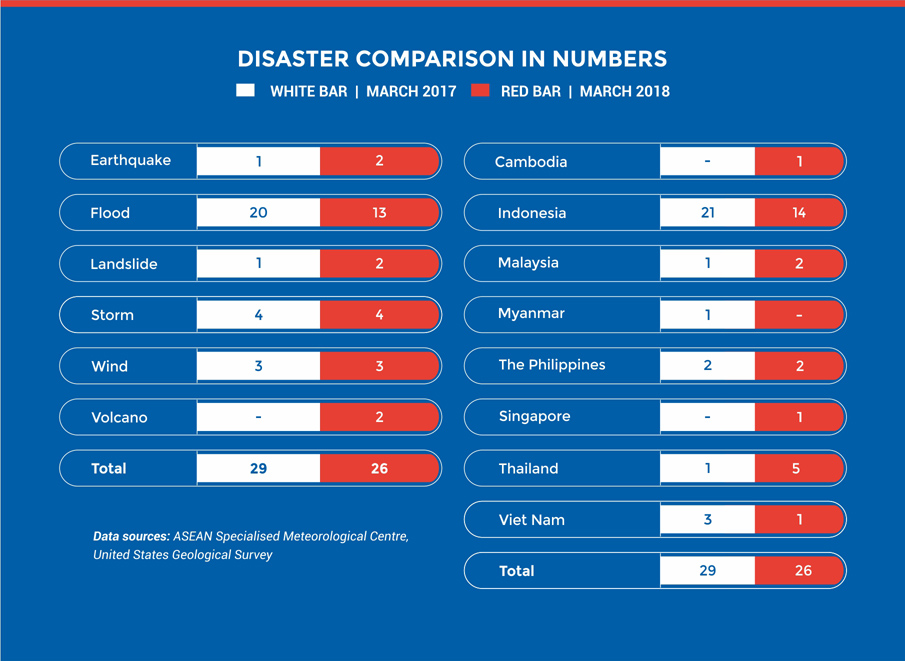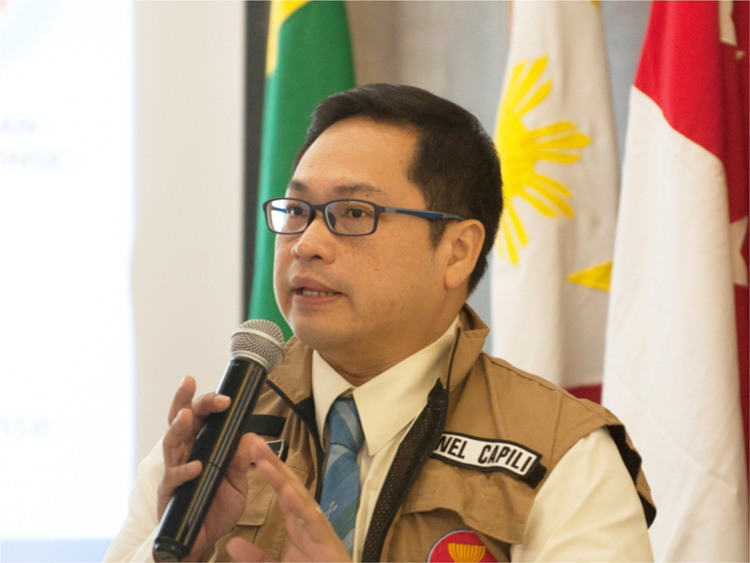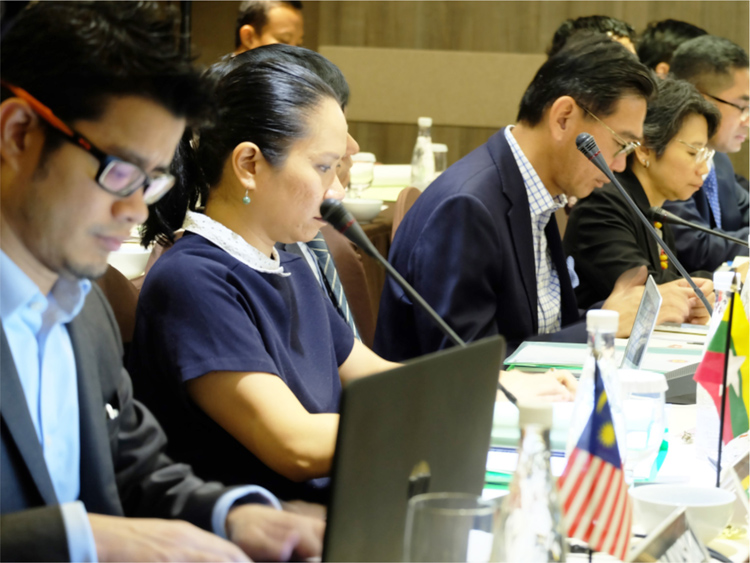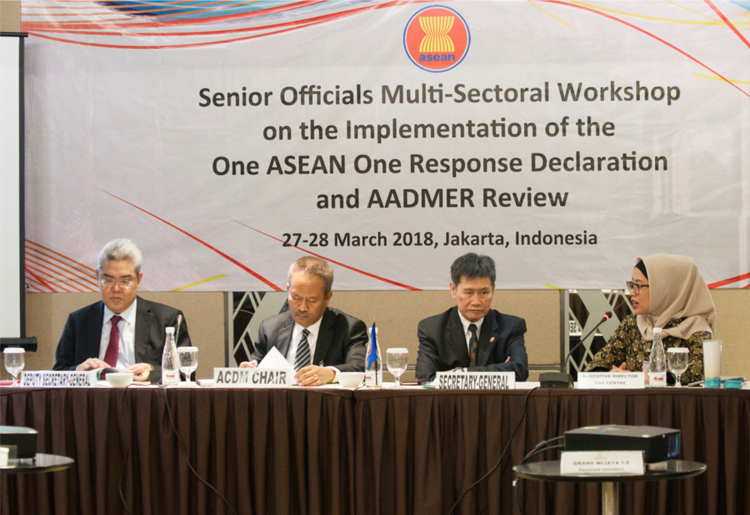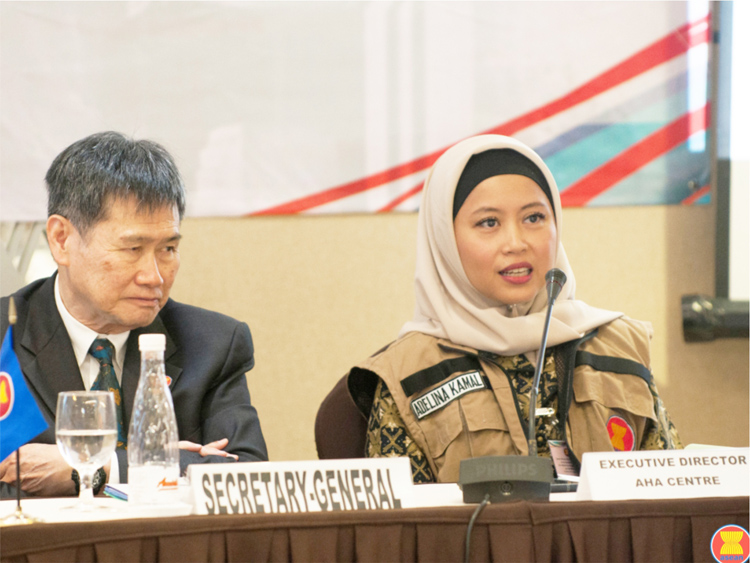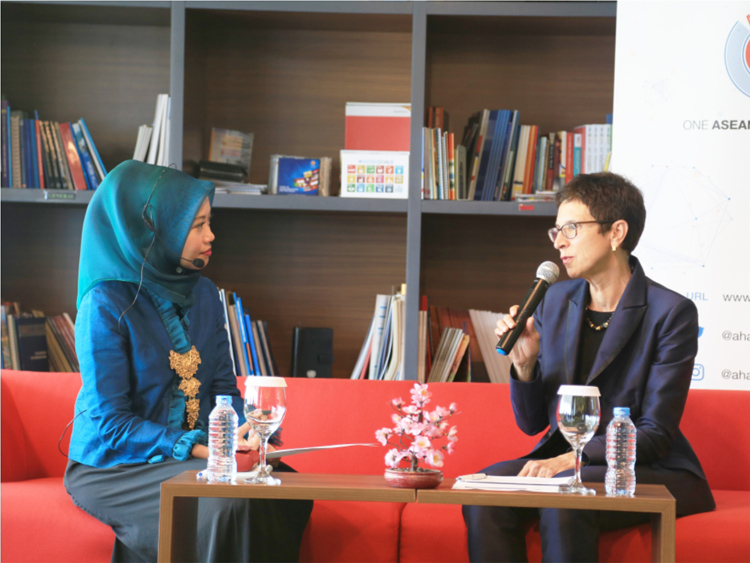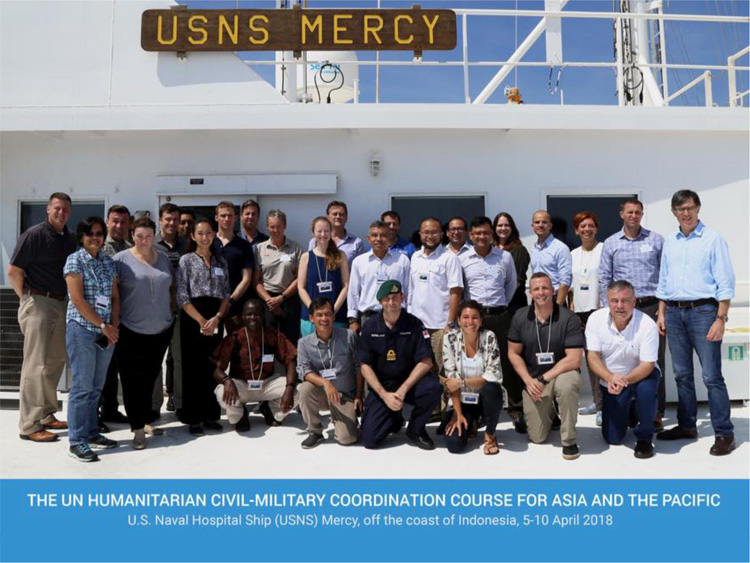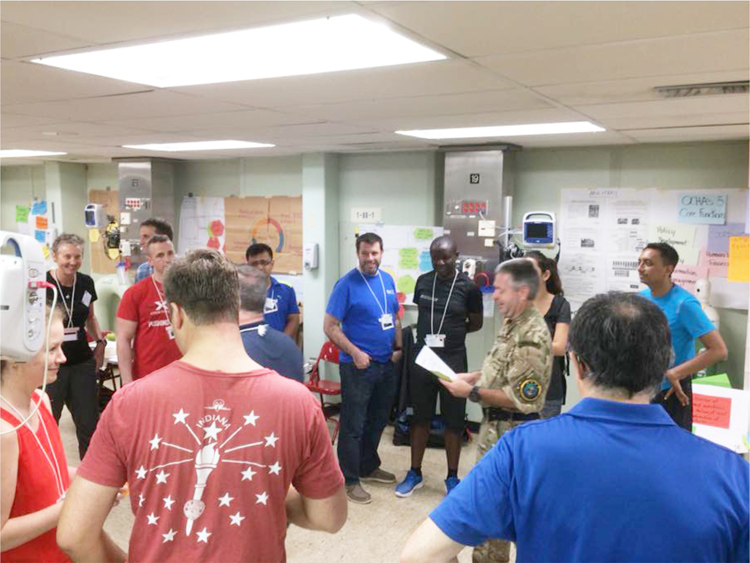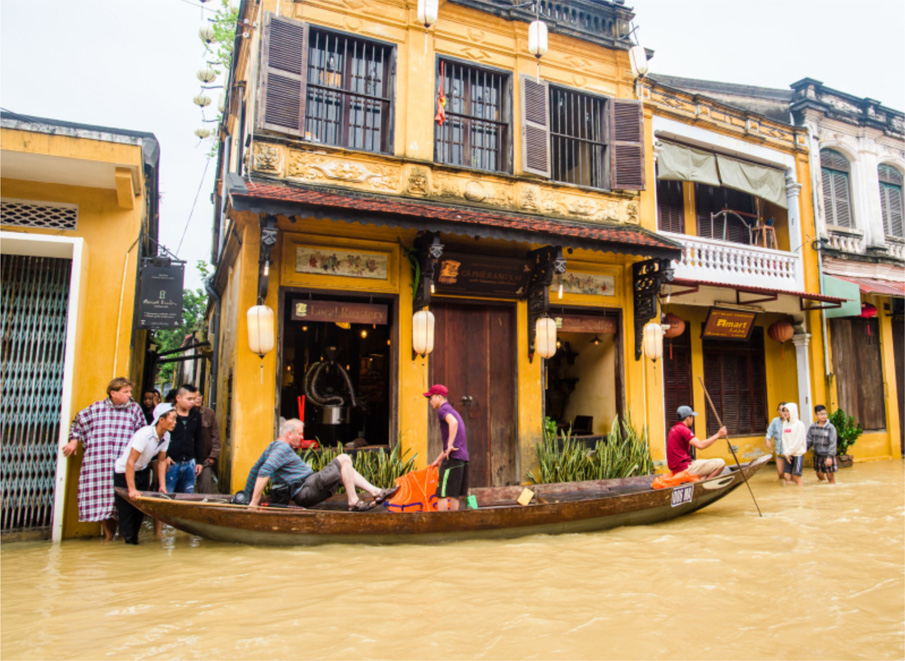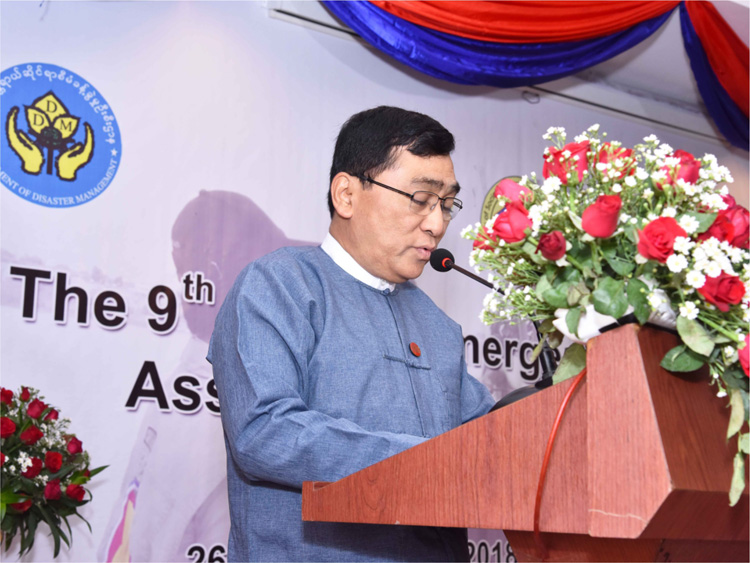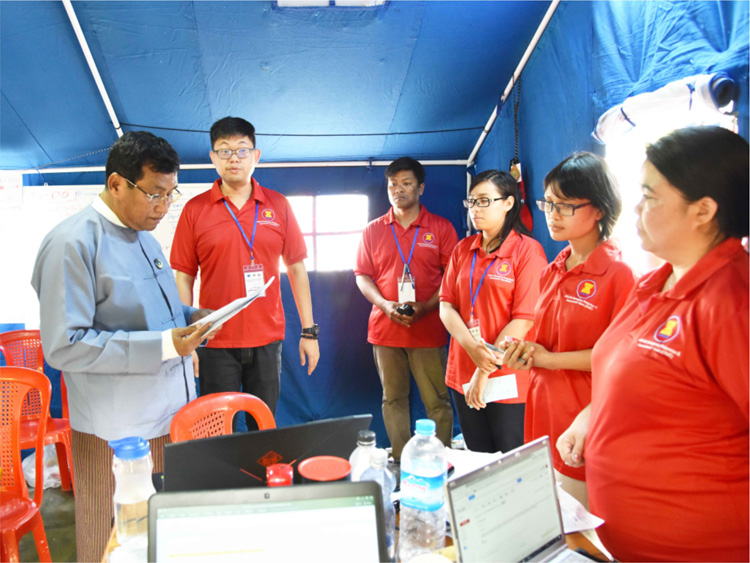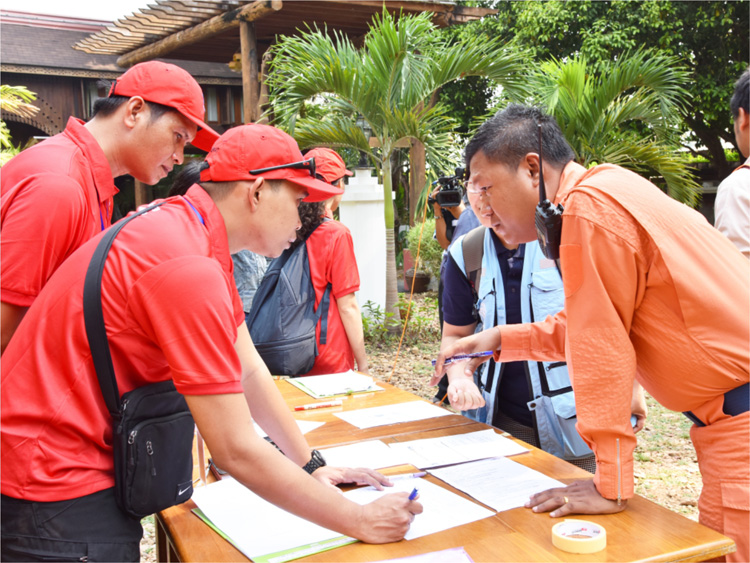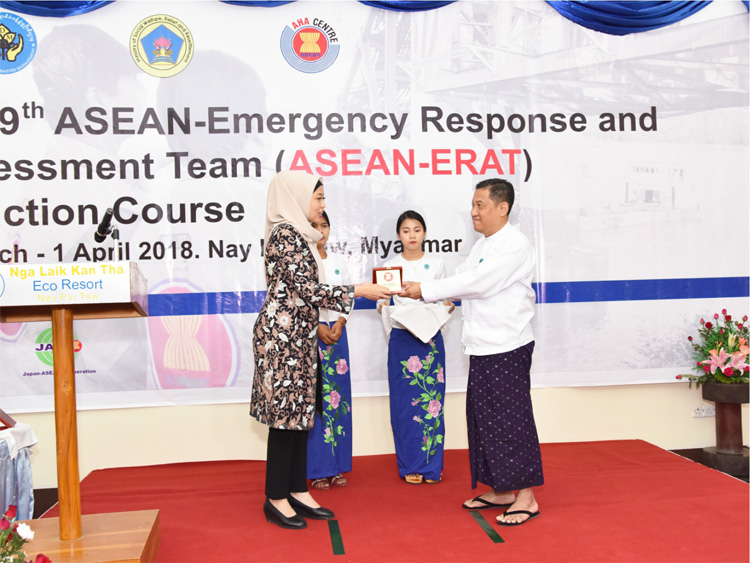Vol 37-Télécoms Sans Frontières Connecting People During Emergencies

TÉLÉCOMS SANS FRONTIÈRES
Connecting People During Emergencies
Télécoms Sans Fontières (TSF) was founded in 1998 and is currently the world’s leading non-profit emergency telecommunications organisation. TSF provides emergency communications facilities for affected populations and humanitarian aid workers during disasters. TSF has an established office in the United States, as well as three operational bases in France, Nicaragua, and Thailand. Over the last 20 years, TSF has developed a roster of worldwide IT and telecoms specialists, ready for deployment within a few hours’ notice of the onset of a disaster. TFS has built its reputation as one of the first responders on the ground when disaster strikes. TFS is also part of the first responder for the UN Emergency Telecommunications Cluster, and also a member of the UN Working Group on Emergency Telecommunications (WGET). TSF is also engaged as a partner of the European Civil Protection and Humanitarian Aid Operations (ECHO) and International Telecommunication Union (ITU).
October 2010 was the first time ASEAN facilitated TSF’s deployment within ASEAN Member States, during the response to the Mentawai earthquake and tsunami in Indonesia. This deployment was initiated at the request of the Office of the President of Indonesia, and in coordination with the Indonesian National Disaster Management Authority (BNPB). Since 2017, ASEAN, through the AHA Centre, has engaged TSF to train ASEAN Emergency Response and Assessment Team (ERAT) regarding emergency ICT processes. The relationship between the AHA Centre and TSF has since been formalised through a Memorandum of Intent (MOI) signed on the 5th of January 2018. The MOI clarifies the facilitation of cooperation, and exchange of information, assets and ideas of mutual interest and benefit for both entities. Through the MOI, TSF also re-affirms its commitment to support ASEAN in enhancing the capacity of ASEAN ERAT for emergency ICT preparedness and response–a key element in the overall One ASEAN, One Response vision.
The partnership between AHA Centre and TSF involves cooperation on preparedness, as well as during emergency responses. Preparedness activities include training and joint deployment to exercises. Insofar, TSF has supported the implementation of three ASEAN-ERAT induction courses since April 2017. For emergency response, this partnership is crucial to support the deployment of ASEAN-ERAT, particularly during early stages when telecommunication systems are usually down.
“Emergency telecommunication will also serve as the backbone to support the role of ASEAN-ERAT in facilitating the coordination of ASEAN response on the ground. During an emergency, TSF will deploy its experts alongside ASEAN-ERAT responders to support their communication. Deployment of TSF experts and their equipment will also leverage ASEAN-ERAT’s capacity to extend our emergency communication support for the affected government and other institutions,” stated Janggam Adhityawarma, Assistant Director for Preparedness & Response with the AHA Centre.
The AHA Centre and TSF will continue to support each other during emergency deployments and through capacity building exercises. We are now looking forward to conduct a joint deployment for the ASEAN Regional Disaster Emergency Response Simulation Exercise (ARDEX) 2018 in Indonesia, to further develop our collaboration in supporting affected ASEAN Member States in times of disaster.
Written by : Carla Budiarto | Photo : AHA Centre/Dandi Rahman
- Published in Partnership
Vol 37-Monthly Disaster Outlook

MONTHLY DISASTER REVIEW OUTLOOK
MARCH 2018 | DISASTER MONITORING & ANALYSIS
(DMA) UNIT, AHA CENTRE
GENERAL OVERVIEW OF MARCH 2018
Hydro-meteorological disasters, particularly floods, strong winds and storms, continued to dominate disaster occurrence figures in March 2018. During the month, flash-flooding events due to extreme rainfall within a short amount of time, occasionally triggering landslides as a secondary disaster, as evident in several events across Indonesia. Localised strong winds and storms caused damage in Cambodia, Singapore, Thailand and Viet Nam.
In terms of geological hazards, moderate-to-strong earthquakes (≥ M 5.0) were observed in Indonesia, Malaysia and the Philippines, triggering minor local disruptions without having a significant impact on communities. The ASEAN Earthquake Information Center (AEIC) recorded four earthquakes with a magnitude stronger than M 6.0, three of these-originating in Papua New Guinea – were felt as far across as the Papua Province of Indonesia. Volcanic activities of Mount Mayon in the Philippines continued to affect more than 90,000 people in the nearby Albay Province. On Mount Sinabung, Mount Ijen and Mount Dieng (in East and Central Java provinces Indonesia), toxic gas releases were recorded, and while there were no significant eruptions, the release on Mount Ijen prompted a mandatory evacuation of local communities.
OUTLOOK FOR APRIL-MAY 2018
According to the ASEAN Specialised Meteorological Center (ASMC), the April-May 2018 season can expect slightly below-normal to near-normal rainfall. This is forecasted for most parts of Southeast Asia, except the Philippines. During April 2018, slightly above-normal rainfall is forecast over the northern regions of Kali-mantan and Sulawesi, and western parts of Papua in Indonesia. Towards May 2018, slightly below normal rainfall is expected for most parts of Kalimantan (Indonesia, Malaysia and Brunei Darussalam), Sumatra, Java, Bali and the Nusa Tenggara archipelago of Indonesia. ASMC also stated that there is around 60% chance of La Niña conditions lasting until to end of April 2018, and then a return to neutral conditions during May.
Indonesian Centre for Volcanology and Geological Disaster Mitigation PVMBG states that for April 2018, areas in western Sumatra, south of central Java, north-eastern Borneo, eastern Sulawesi and northern Papua will be prone to ground movement inducing, landslide events. Continuous monitoring for potential humani-tarian consequences will also be required due to the activity of Mount Sinabung (‘PVMBG’s arlet level: warning) and Mount Agung (‘PVMBG’s arlet level: watch) in Indonesia, as well as Mount Mayon and Mt. Kanlaon (PHIVOLCS’ alert level 2, – moderate level of unrest) in the Philippines. Moderate-to-strong earthquakes are still expected in the bordering region between Papua (Indonesia) and Papua New Guinea.
Written by : Mizan Bisri, Qing Yuan Pang
DISCLAIMER
AHA Centre’s estimation is based on data and information shared by National Disaster Management Organisations (NDMOs) and other relevant agencies from ASEAN Member States, international organisations and news agencies. Further information on each recorded-significant disaster, description and details of data and information are available at: http://adinet.ahacentre.org/reports.
- Published in Monthly Disaster Outlook
Vol 37-ASEAN Workshop on The Implementation of ONE ASEAN ONE RESPONSE

ASEAN WORKSHOP
ON THE IMPLEMENTATION OF ONE ASEAN ONE RESPONSE
Remaining focused on responding to natural disasters in the ASEAN region, alongside planning for facilitating potential collective ASEAN responses outside of the region form the key recommendations for the AHA Centre. These points were deliberated by participants of the ASEAN Senior Official Multi-Sectoral Workshop on One ASEAN One Response, organised by the ASEAN Secretariat, from the 27th to 28th of March 2018. Representatives from a wide range of ASEAN sectoral bodies attended the workshop, including from the Country Permanent Representatives (CPR), the ASEAN Committee on Disaster Management (ACDM), representatives from the Senior Official Meeting (SOM), ASEAN Defense Senior Official Meeting (ADSOM), Senior Official Meeting on Health Development (SOMHD), Senior Official Meeting on Social Welfare and Development (SOMSWD), as well as other relevant ASEAN entities and partners.
The principal purpose of this meeting–as highlighted by the ASEAN Secretary-General H.E. Lim Jock Hoi during his opening address–was to engage the views of a range of stakeholders in more prominently defining the functions of the Declaration, as well as providing clarity to requirements for current and future humanitarian challenges faced by the ASEAN region.
The One ASEAN One Response Declaration, signed by the ASEAN Leaders in 2016, reaffirms the commitment of ASEAN nations to respond collectively to major disasters in the region as one, in order to achieve faster speed, greater resources and stronger coordination. It also reaffirms the position of the AHA Centre as the primary regional coordinating agency on disaster management and emergency response, as well as tasks the AHA Centre to establish coordination mechanisms with other East Asian Summit (EAS) participating countries to enable them to provide assistance to ASEAN countries affected by disasters. The Declaration also envisions a future where ASEAN countries can collectively provide assistance to countries outside of the ASEAN region, and tasks the AHA Centre with preparing for such engagement.
The AHA Centre used this opportunity to update workshop participants on recent progress made by the AHA Centre in operationalising the One ASEAN One Response Declaration. The Director of Operations of the AHA Centre, Arnel Capili, presented a range of tools and concepts that the AHA Centre has developed throughout recent years, supported by strategic guidance from the ACDM. Such processes, amongst others, include the Joint Operations and Coordination Centre of ASEAN (JOCCA), the Web Emergency Operation Centre (WebEOC), and the Disaster Monitoring and Response System (DMRS). However, the most important of all is the ASEAN Joint Disaster Response Plan (AJDRP), which contains a list of earmarked assets and capacities of ASEAN Member States that may be voluntarily mobilised to support countries affected by disaster.
The operational focus of the AHA Centre also formed a key subject of discussion during the workshop, with many participants seeking clarification on the AHA Centre’s future role responding to human-induced disasters, as an addition to natural disaster response. Participants finally agreed that AHA Centre should remain focused on natural disasters, with potential human-induced disaster response to be decided on case-by-case basis and with limited focus only on providing immediate humanitarian assistance in such cases. All the points of discussion were summarised into a 16-point recommendation list to be presented to the next meeting of the ACDM in June 2018.
The Executive Director of the AHA Centre, Adelina Kamal, thanked all the ASEAN Member States for their continued and ongoing support for the AHA Centre. She nevertheless highlighted that there is still much work to do, including increasing the contribution of other sectors in ASEAN for the AJDRP, as well as pushing for broadened participation of the private sector and civil society in the AJDRP.
The AHA Centre launched and introduced a new handbook titled “Operationalising One ASEAN One Response: Speed, Scale, Solidarity” at the workshop, which serves as a reference for operationalising One ASEAN One Response.
Written by : Dipo Summa | Photo : AHA Centre/Shintya Kurniawan, ASEAN Secretariat
- Published in Highlight
Vol 38-H.E.Ursula Mueller

H.E. Ursula Mueller
United Nations Assistant Secretary-General for
Humanitarian Affairs and Deputy Emergency Relief Coordinator
IN EARLY APRIL 2018, THE AHA CENTRE HAD THE HONOUR OF MEETING H.E. URSULA MUELLER, THE UN’S ASSISTANT SECRETARY-GENERAL FOR HUMANITARIAN AFFAIRS AND DEPUTY EMERGENCY RELIEF COORDINATOR, WHO HAS BEEN A STRONG SUPPORTER OF GLOBAL HUMANITARIAN AND DEVELOPMENT AFFAIRS FOR OVER 30 YEARS. MS. MUELLER HAS DEVELOPED AN EXTENSIVE RANGE OF EXPERIENCES IN INTERNATIONAL AFFAIRS, THROUGH HER PREVIOUS ROLES AS GERMANY’S CIVIL COORDINATOR IN KOSOVO, GERMANY’S SPECIAL ENVOY TO AFGHANISTAN, DEPUTY DIRECTOR-GENERAL AT GERMANY’S MINISTRY OF FOREIGN AFFAIRS, AND DIRECTOR-GENERAL OF GERMANY’S MINISTRY OF ECONOMIC COOPERATION AND DEVELOPMENT.
She has also served as a member of the Advisory Board of the United Nations’ Central Emergency Response Fund (CERF), as well as to the United Nations Relief and Works Agency for Palestine Refugees in the Near East (UNWRA). Furthermore, her leadership in the role German Executive Director to the Board of Executive Directors of the World Bank Group between 2014 to 2017, resulted in stronger ties between the World Bank and the United Nations (UN).
Having the opportunity to engage with Assistant Secretary-General Mueller during her visit to the home of One ASEAN One Response in Jakarta, the Column’s editorial team gained valuable insights on regional and international cooperation for the provision humanitarian assistance. The humanitarian affairs partnership between ASEAN and the UN has progressed throughout the past 10 years, particularly after the devastation of Cyclone Nargis in Myanmar during 2008. Ms. Mueller stressed that ASEAN, the UN, and other global humanitarian stakeholders can deliver better results through working together.
During the discussion, Ms. Mueller highlighted the key strength of disaster management in the ASEAN region – namely the presence of a formal mandate, agreed-upon by all Member States. “You have a platform in which ten leaders have signed the Declaration on One ASEAN One Response. It gives you a very strong mandate to be relevant,” she said. “However, delivering on that mandate requires political support, financial support, and resources. Not only financial resources, but also relevant skills and standards that you can develop further through training.”
Ms. Mueller spoke about the importance of balanced partnerships, partnerships that suit the needs and context of both parties. She mentioned that fostering partnerships does not necessarily mean saying “yes” at every opportunity, but that often the real strength of a durable partnership can be knowing when it is appropriate to say “no” while, at the same time working together to find the best solutions to address humanitarian needs.
It is in the context of growing trust and partnership that the AHA Centre continues to work closely with UNOCHA to facilitate induction courses for the ASEAN Emergency Response and Assessment Team (ERAT) – as part of the ASEAN-ERAT Transformation Plan – which links closely to the curriculum of the United Nations Disaster Assessment and Coordination Team (UNDAC). As the international and regional humanitarian systems continue to develop, the need for coherence and interoperability between the coordination mechanisms managed at these various levels will be essential if we are to fulfil our collective mandate of meeting people’s needs by supporting the lead role played by governments. The priority must be that our respective processes and mechanisms complement, but do not duplicate each other, while assuring the ongoing safeguarding of the universally agreed humanitarian principles.
With regard to collective emergency response and the coordination roles of entities such as the AHA Centre and UNOCHA, ASG Mueller believes that preventative measures are more effective than a purely reactive approach. Thus, investing in early warning systems and preparedness should be considered as a top priority for the ASEAN region. Such investment will enable early action and improved coordinated responses at the regional level and support collective and synergised engagement in broader humanitarian challenges, including climate change, migration, drought, urbanisation, and human-induced disasters that cause displacement and human suffering.
Ms. Mueller is also a member of the International Gender Champions network – a group comprised of male and female leaders who aim to deconstruct gender barriers and establish gender equality through their leadership capacity. “It is important that we have the support of the men who are in positions of power,” she stated. “The Secretary-General of the UN has approved a gender parity strategy, which he is very committed to. Through women’s empowerment measures, we aim to achieve gender parity by 2028, as there is strong evidence that women’s engagement in peace-building and peacekeeping operations can positively impact the achievement of solutions.”
“In my own experience, in order to break the glass ceiling, you have to be professional, true to your values, also make your own contributions known” H.E. Mueller continued. “Your contribution to solving an issue deserves recognition, but you have to also be humble enough to know that it is not about yourself. You may be frustrated, but stay optimistic, realistic, and never give up,” Ms. Mueller stated, while sharing her tips as a leading woman in the humanitarian network.
Written by : Shintya Kurniawan | Photo: AHA Centre, United Nations
- Published in The Other Side
Vol 38-Humanitarian Civil-Military Coordination (UN-CMCOORD) Training

HUMANITARIAN CIVIL-MILITARY
COORDINATION (UN-CMCOORD) TRAINING
BENGKULU, 5-10 APRIL 2018
On 5th–10th of April 2018, the AHA Centre participated in a Humanitarian Civil-Military Coordination (UN-CMCOORD) training, conducted on-board the US Naval Hospital Ship (USNS) Mercy in Bengkulu, Indonesia. The training was implemented by the United Nations Office for the Coordination of Humanitarian Affairs (UNOCHA) alongside the United States Pacific Fleet.
As military institutions often play a significant role within emergency responses, there is a real need to foster meaningful collaboration between military actors, civilians, and other international humanitarian organisations. This sees UNOCHA facilitating trainings such as the UN-CMCOORD on a regular basis across the world. The training’s underlying principle is to create and share common understanding for the facilitation of the right assistance, to the right people, at the right time, and using the most appropriate methods during emergency response. The training included a variety of modules, such as coordination and sharing of resources, protection of civilians, and the security of humanitarian aid workers – an effort that has developed the global #NotATarget campaign.
The participants in the UN-CMCOORD training held a range of diverse backgrounds. Alongside military representatives and UNOCHA staff, representatives from non-governmental organisations, National Disaster Management Organisations, regional organisations, and the International Red Cross/Crescent Societies were also involved. However, this event stands as the first time such a training was conducted on a military vessel. The USNS Mercy was originally an oil tanker, redeveloped into a military medical hospital, complete with a surgery operation room for humanitarian assistance and disaster response operations.
“I found the environment and direct exposure to military responses throughout the training as a very insightful experience. Furthermore, the content on liaising, communicating and facilitating dialogues between civilian and military actors during emergency operations is also very crucial in the region, as military actors often are the first responders in emergency situations,” stated Janggam Adhityawarma, Assistant Director of Preparedness and Response, and the AHA Centre’s representative at the training.
Written by : Shintya Kurniawan | Photo : AHA Centre
- Published in AHA Centre Diary 1
Vol 38-The 9TH ASEAN-ERAT Induction Course

THE 9TH ASEAN-ERAT
INDUCTION COURSE
Ten years since its first ASEAN-ERAT deployment – to support the response to Cyclone Nargis in Myanmar – the AHA Centre conducted its 9th ASEAN-ERAT Induction Course from the 26th of March until the 1st of April 2018, in Nay Pyi Taw, Myanmar. With outstanding support from the Department of Disaster Management of Myanmar (DDM) as the host, the course was attended by 31 participants from nine of the ten ASEAN Member States. Participants came from an array of backgrounds, including National Disaster Management Organisations, Red Cross and Red Crescent Societies, Civil Society Organisations, Youth Groups, the ASEAN Secretariat, ASEAN Plus Three Emergency Rice Reserve (APTERR), and the AHA Centre itself. The 9th ASEAN-ERAT Induction Course was officially opened with an inspiring speech by Dr. Win Myat Aye, the Union Minister of Social Welfare, Relief and Resettlement of Myanmar.
One of the key features of the 9th course was the simulation exercise scenario – which engaged one of the ASEAN Contingency Plans for large scale disaster – namely a 7.2 magnitude earthquake in Metro Manila. Using this contingency plan scenario, the simulation exercise increased the feeling of authenticity for participants as they performed the ASEAN-ERAT core functions, including rapid damage and needs assessments and incoming ASEAN relief item facilitation. They also enacted the provision of on-site coordination support to the affected country’s local authorities, namely through the facilitation of coordination meetings between a range of ground-level stakeholders.
The simulation exercise also allowed ASEAN-ERAT participants to develop their working relationships with the United Nations Disaster Assessment and Coordination (UNDAC) team, as part of the continued development of inter-operability between the Joint Operations and Coordination Centre of ASEAN (JOCCA) and the UN On-site Coordination Centre. Other components including personnel and team safety and security, as well as working with media were also tested during the simulation exercise. By simulating this response as part of the ASEAN-ERAT course, the AHA Centre has further enhanced the streamlining and capacity of ASEAN-ERAT within the ASEAN Contingency Plan development process.
Of particular note was the enthusiasm and spirit of the participants to deliver results during the non-stop, 48-hour simulation exercise. Given its intensity, the diversity of participants’ backgrounds, and varying skills across the different nationalities, the final results were considerably strong. These diversities and challenges were raised throughout the debrief session, often identified as considerable factors in shared-learning and strengthening the team.
Participants also valued the engagement of a range of external parties, including the United Nations Office for the Coordination of Humanitarian Affairs (UNOCHA), the International Red Cross/Crescent Societies (IFRC), Map Action, Télécoms Sans Frontières, and Myanmar Red Cross amongst others, which provided them the opportunity to familiarise themselves with other key actors who would work alongside them in the field. This also allowed participants to see the importance of stakeholder engagement in achieving the vision of One ASEAN, One Response within the ASEAN-ERAT programme.
The successful completion of the 9th ASEAN-ERAT Induction Course, supported by the Japan-ASEAN Integration Fund (JAIF), alongside other previously-mentioned implementation partners, sees a current pool of 252 ASEAN-ERAT members across the region. Graduates were inaugurated during the Closing Ceremony by Ms. Adelina Kamal, Executive Director of the AHA Centre, together with the Deputy Minister of Social Welfare, Relief and Resettlement of Myanmar, Dr. U Soe Aung and Director General of DDM of Myanmar, Dr. Ko Ko Naing.
“We believe that the benefit of the ASEAN-ERAT goes beyond disaster response and that, because the ERAT teams are composed of government and NGO staff, participants are able to learn skills and get awareness of technologies and practices to take home and use in their current and future projects” – Sebastien Latouille, Delegate of Télécoms Sans Frontière.
“All of the new graduates should feel a great sense of pride. This very demanding course tested each of them and they all came through!” – Oliver Lacey-Hall, Head of UN-OCHA Indonesia/ASEAN Liaison Office.
“During the training, we made mistakes under the stress of the situation. But we could correct our mistakes and overcome the stress by working together and supporting each other as a team. We really appreciate the patience of our facilitators and mentors, for teaching us, for staying with us in the SimEx and sharing your knowledge and expertise with us” – Chan Nyein Thu, ASEAN-ERAT member Batch 9, Department of Disaster Management, Myanmar.
Written by: Grace Endina | Photo: AHA Centre
- Published in Highlight
Vol 39-PREDIKT Team

PREDIKT TEAM
Disaster awareness and preparedness forms a key element within overall disaster management efforts, supporting significant decreases in severity of disaster impact on affected communities. While there is a vast array of science and knowledge behind awareness and preparedness, there remain many challenges in communicating such knowledge to a vast and diverse communities across the ASEAN region. Developing engaging, child and family-friendly tools for communicating disaster awareness and promoting preparedness is the defining element behind the creation of PREDIKT – the Preparedness for Disaster Toolkit – a unique and innovative toolkit designed by a group of young Indonesian change-makers. One of PREDIKT’s designers, Avianto “Anto” Amri, spoke to The Column about this innovative and interesting project.
The idea for PREDIKT came about due to the designer’s personal experiences of a lack of family-friendly information and tools for disaster awareness and preparedness in the home – particularly to support parents and their children on learning about disaster preparedness together. As many children are at home when disaster strikes, in-home learning forms a key element of overall disaster preparedness efforts, and empowers children and their families with the knowledge of what must be done should they face a disaster.
Initially, as part of his PhD studies, Anto designed a family disaster preparedness plan in the form of poster guidance cards that allowed children and their parents to learn essential steps for ensuring preparedness within their homes. Based on positive testing results, Anto teamed-up with Tasril “Iriel” Mulyadi (designer) and Wahyu “Billie” Minarto (child safety expert), to further develop and then submit
the toolkit to a Flood Resilience Innovation competition organised by the International Federation of the Red Cross/Red Crescent Societies (IFRC) and Zurich Insurance – a competition in which their innovation took out first place. This was followed by the team proposing for, and being awarded a grant for the toolkit through the United States Government-sponsored Young Southeast Asian Leaders Initiative (YSEALI) Seeds for the Future programme, and with the addition of another team member – Meliza “Liza” Rafdiana – PREDIKT hit the ground running.
PREDIKT itself is formed by a set of board games and physical learning materials that form a fun and hands-on way for children and their parents to learn about disaster preparedness at home. As the ASEAN region continues to modernise, many such tools have moved to online and electronic platforms – yet PREDIKT chose to focus on a more traditional, physical style. As stated by Anto, online platforms still face significant limitations within a rapidly developing ASEAN community.
“We wanted to create something offline because we know that there are still many places in Indonesia as well as in many ASEAN countries that do not have access to internet or even electricity.”
– Anto explains.
Here-in lies the inclusiveness and accessibility of the PREDIKT format. The team also aims to facilitate a fun and interactive atmosphere for the entire family, allowing children to engage with their parents and ask questions related to disaster preparedness.
The toolkit bases itself on five key elements, all of which add-up to form the reason for its attractiveness and functionality. PREDIKT has been developed to be easy to understand, using child-friendly wording and visual elements, and also aims to motivate children to discuss preparedness with their family. The toolkit always aims to remain affordable, alongside its offline status to ensure access for any family regardless of their situation. Finally, PREDIKT aims to be expandable, allowing it to be further developed to encompass a range of other relevant elements related to disaster hazards and preparedness functions. This expansion forms a key facet of PREDIKT’s plans for the near future. Currently focusing on 5 specific disaster hazards, the team is in the process of expanding the toolkit to cover a wider range of disaster content. Alongside this, they are also working
institutions to increase the toolkit’s inclusivity – with particular focus to children with visual impairments or other disabilities. Not disregarding the importance of online presence, PREDIKT also plans to focus towards building and strengthening their website as an online hub for child-friendly disaster preparedness information sharing.
As for the response, so far PREDIKT has received great praise – particularly from users themselves. “We continue to be amazed with the reactions of parents who have played PREDIKT”, says Anto. He recalls a mother who was particularly excited by the toolkit’s ability to allow her children to learn as they play. “She was excited that finally her children would take their eyes off their gadgets to engage with her in learning and games”. “It’s like taking a course on disaster preparedness, minus all the boring parts” says Anto as he quotes another response from a happy mother. The variety of positive responses continue to display the value in the engagement of children, as well as their desire to ask questions and learn more. These responses evidence the importance and aims of PREDIKT itself, as concluded by Anto when he stated that “PREDIKT really does fill the gap for children to learn, together with their parents, about disaster preparedness in a fun and interactive way”.
Written by : Shintya Kurniawan | Photo : AHA Centre, PREDIKT
- Published in The Other Side

